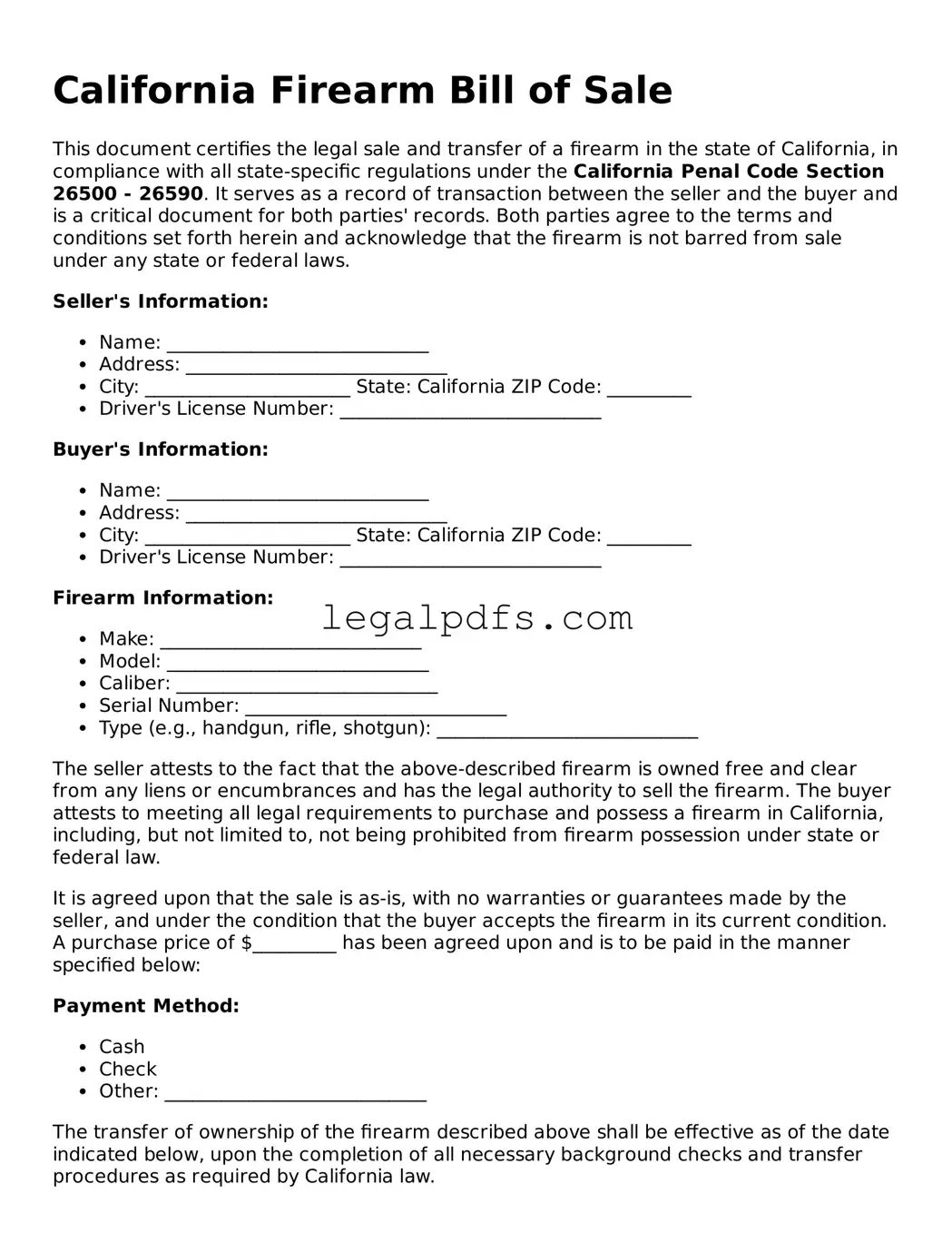California Firearm Bill of Sale
This document certifies the legal sale and transfer of a firearm in the state of California, in compliance with all state-specific regulations under the California Penal Code Section 26500 - 26590. It serves as a record of transaction between the seller and the buyer and is a critical document for both parties' records. Both parties agree to the terms and conditions set forth herein and acknowledge that the firearm is not barred from sale under any state or federal laws.
Seller's Information:
- Name: ____________________________
- Address: ____________________________
- City: ______________________ State: California ZIP Code: _________
- Driver's License Number: ____________________________
Buyer's Information:
- Name: ____________________________
- Address: ____________________________
- City: ______________________ State: California ZIP Code: _________
- Driver's License Number: ____________________________
Firearm Information:
- Make: ____________________________
- Model: ____________________________
- Caliber: ____________________________
- Serial Number: ____________________________
- Type (e.g., handgun, rifle, shotgun): ____________________________
The seller attests to the fact that the above-described firearm is owned free and clear from any liens or encumbrances and has the legal authority to sell the firearm. The buyer attests to meeting all legal requirements to purchase and possess a firearm in California, including, but not limited to, not being prohibited from firearm possession under state or federal law.
It is agreed upon that the sale is as-is, with no warranties or guarantees made by the seller, and under the condition that the buyer accepts the firearm in its current condition. A purchase price of $_________ has been agreed upon and is to be paid in the manner specified below:
Payment Method:
- Cash
- Check
- Other: ____________________________
The transfer of ownership of the firearm described above shall be effective as of the date indicated below, upon the completion of all necessary background checks and transfer procedures as required by California law.
Date of Sale: ____________________________
Location of Sale: ____________________________, California
The parties herein agree to all terms and conditions of the sale as outlined in this Bill of Sale and have affixed their signatures below:
Seller's Signature: ____________________________ Date: ___________
Buyer's Signature: ____________________________ Date: ___________
This document is executed in duplicate, with each party receiving an original signed copy for their records.
